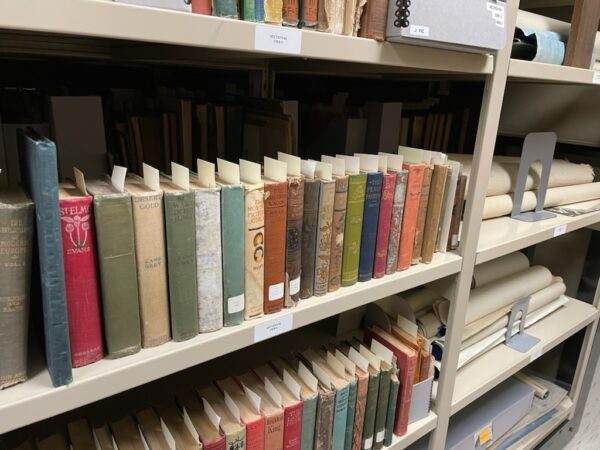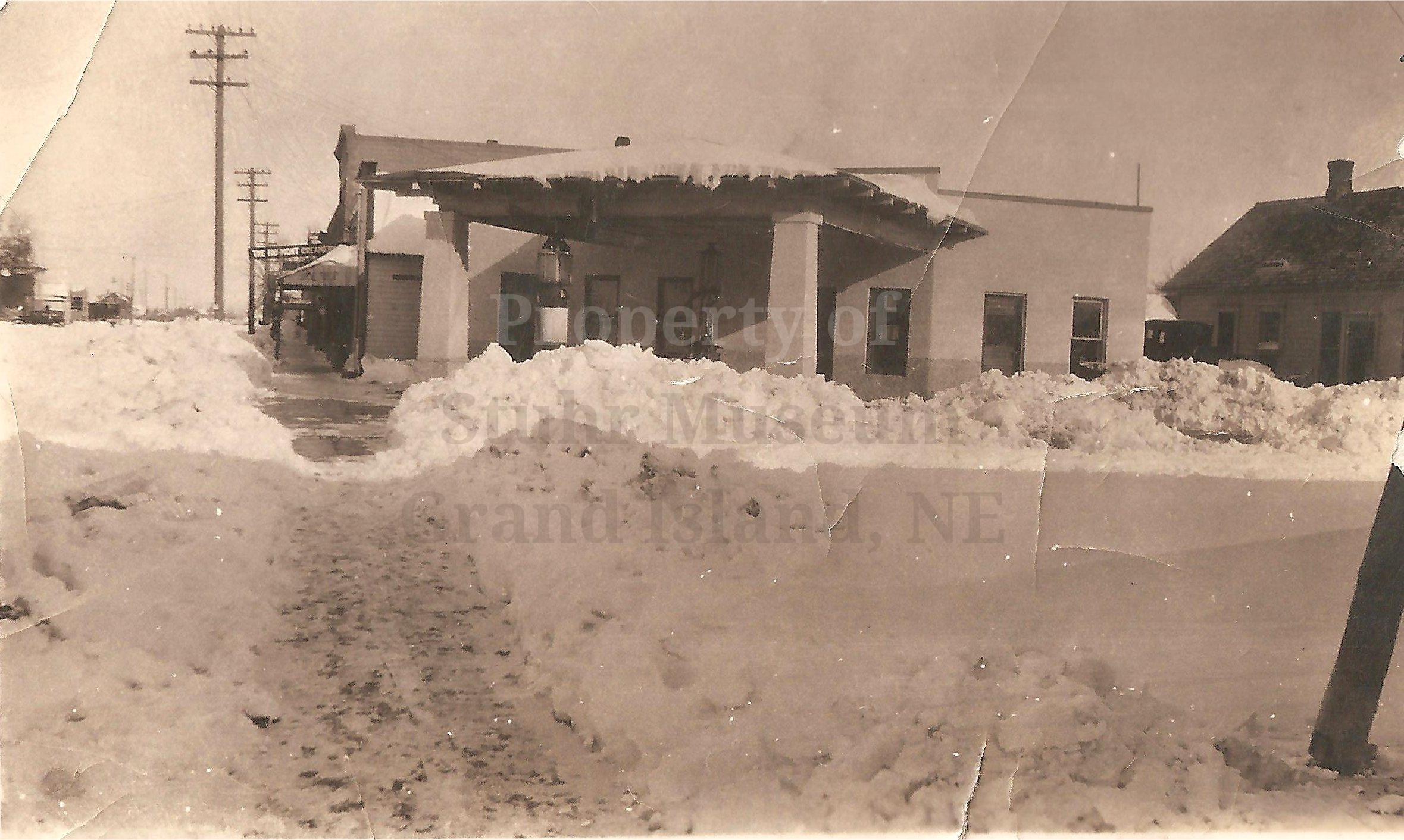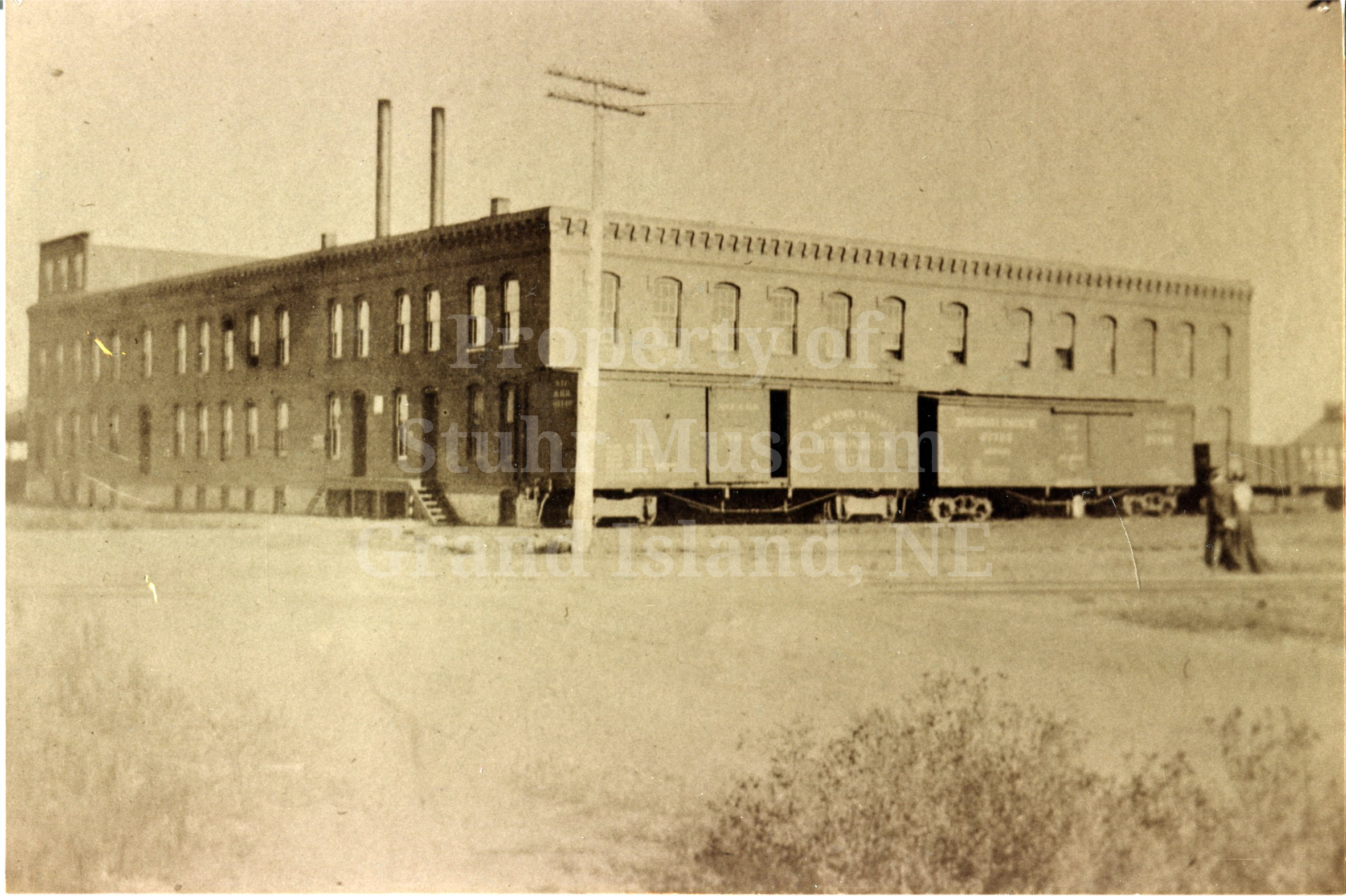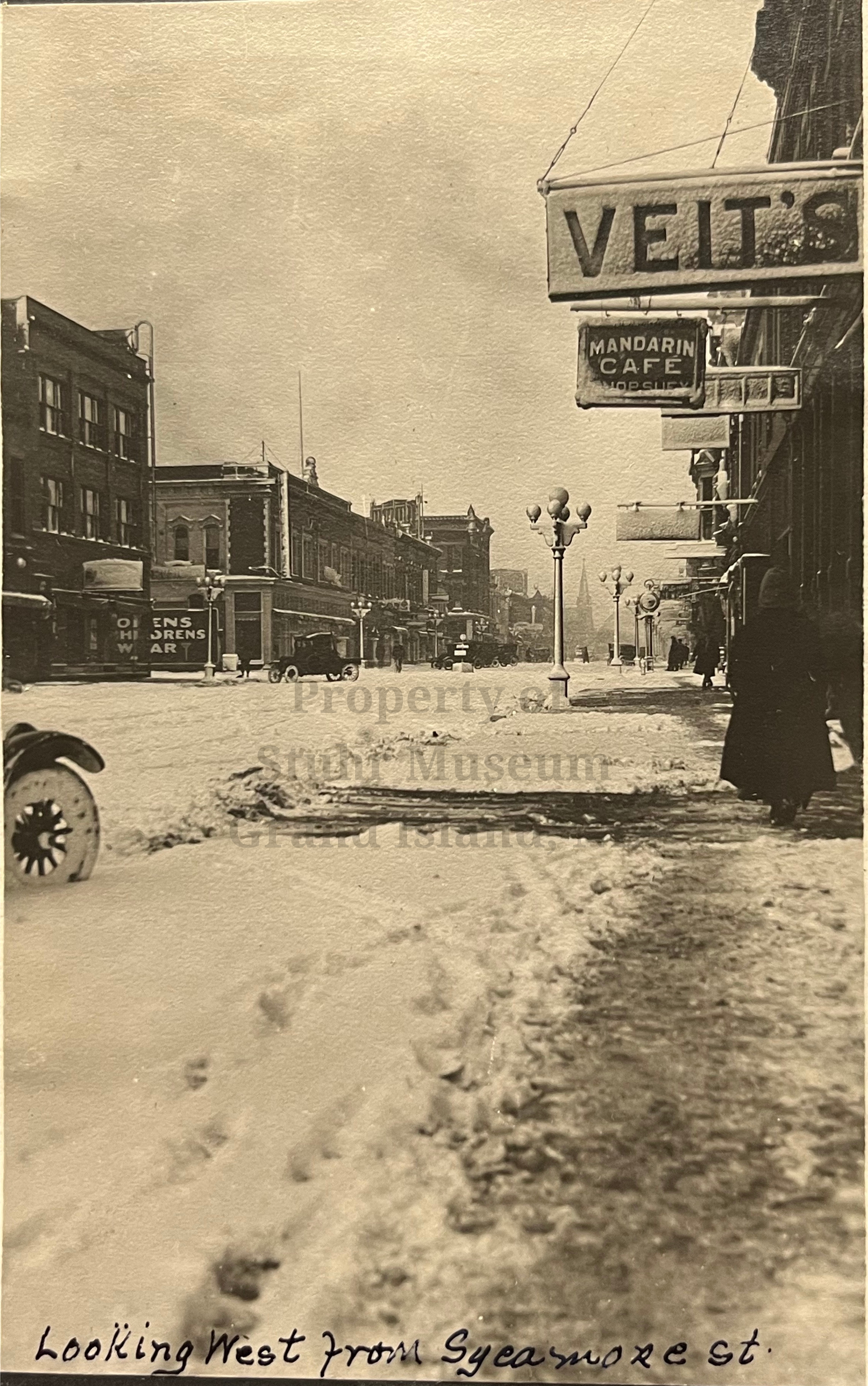
Research &
Collection
Research
The Library and Archives of the Stuhr Museum are located in the Edgar and Frances Reynolds Research Center. The Reynolds Center was made possible by generous grants from the Edgar and Frances Reynolds Foundation, Inc. and the Peter Kiewit Foundation.
The Research Department is open by appointment to all individuals interested in historical research and study. The department also offers seminars, workshops, and programs in genealogical and historical research; using local history in the classroom; preservation of family heirlooms; and interpreting family heirlooms, including photographs, textiles, and many other objects.
Hours:
Please contact the Research Department to make an appointment at least 72 hours prior to your visit.
Monday – Friday: 9 a.m. to 4 p.m.
Saturday: By appointment only
Sunday: CLOSED
Contact us: research@stuhrmuseum.org
More about the Research Department
From the Archives
Here are a few photos from our collection that we’re spotlighting this month. Check back for more next month!

Snow in Cairo, Nebraska 1923
This is a snowy look at Cairo, Nebraska in 1923. The Cairo Record newspaper reported on strong snowstorms hitting the area on March 7th, 14th again on the 21st. This view shows the east side of South High Street at the corner of Nile Street looking north at Highland’s Midland Oil station. The sign above the sidewalk on the left of the station is for Fairmont Creamery. There is a car just down the street on the left and one parked on the right side of the station. Marked on the back of the snapshot image is “Galbreath Motor Co.”

Grand Island Canning Factory
The Grand Island Canning factory was located approximately at the current address of 1021 East 4th Street. Built in 1887 and opened in August of that year, the plant was composed of four buildings: the Main Building, Processing House, Boiler and Engine House and the Husking Shed. The building shown in this photo most closely matches the description of the Processing House, which was described in articles of the Grand Island Independent and the Times as being all brick, two stories, and measuring 30 ft by 43 ft. Equipment was put into operation in May of 1887 ahead of the opening in August. The plant processed between 20,000 and 30,000 cans per day, employed 121 people, and had a payroll of $800 per week. They began operation processing sweet corn, using 75 tons of corn daily, which arrived at the plant unhusked. Canned corn was shipped to points in Colorado, Wyoming, Utah, and California under the Archer brand name. The owner was the Council Bluffs Canning Co. and was billed as the second largest plant of its kind in the northwestern states. The intention was to expand the facility and bring manufacturing of the cans, corn starch, and a packing house the next year. The plant operated in 1888 and 1889 but was closed in 1890. This cycle of being closed and open would continue through the years under different owners before becoming an egg processing plant called Twin Rivers in the late 1960s, then a paper recycling center in the early 1970s. The property was auctioned in August 1971. The recycling center remained open through early 1975. Demolition of the final building occurred sometime before 1979, when Tri-City Body Shop obtained a permit to construct a new shop at that location in January 1979.

Grand Island Creamery No. 1
Grand Island’s first creamery company was formed by a group of stockholders, who met in March of 1884, with J. W. Liveringhouse as President, J. P. Kernahan as Vice President, J. E. Jewett as Secretary and J. H. Withers as Treasurer. The group adopted Articles of the Association to file with the Secretary of State at the same time. They also purchased six acres of land to build the creamery from Augusta Egge, widow of Henry, on land located near the area where East Fourth Street turns into Sky Park Road today. Prompted by John Stewart of Iowa, who spent a good deal of time in Nebraska assisting communities to promote and start creameries, the company also arranged for construction of the building, purchase of machinery, and 1,000 milk cans, with the goal that the plant would be in operation in May of the same year. The original structure was struck by lightning during a storm on August 5, 1888. The company moved quickly to reconstruct the building using brick, the structure pictured here. This location remained in operation until sometime in 1906 when it was sold for other use. Another version of this image appeared in the Independent on March 12, 1987, as a photo of a painting of this picture by Evy Schuff.

Looking West from Sycamore Street, Grand Island
Looking west onto Third Street from Sycamore Street, this view is close to the north side of the 100 block of East Third Street, with the closest readable signs being Veit’s Grocery and the “Mandarin Cafe Chopsuey.” Veit’s Grocery operated at 120 East Third Street between November 1886 and July 1919. The Mandarin Cafe was opened by Tom Jim in January 1914 at 118 East Third and operated at that location until June 1928. This helps to date the photograph from between 1914 and 1919. The Chicken Coop is currently located at these addresses. As you look down the street on the left you can see the Wolbach building on the southwest corner of Third and Pine, and looking to the right you can see the original clock that once stood on the northwest corner of the same intersection under a dusting of snow. The church seen in the distance is the First Methodist, which was in the 500 block of West Third Street.
Collection
Stuhr Museum houses over 140,000 2D and 3D objects in our collection. With over 200 acres of property and over 100 structures on the museum grounds, Stuhr Museum exhibits numerous artifacts at any one time. Each of the objects on exhibit illustrates a unique component of the history of the Hall County and Central Nebraska region from the 1840s until 1930 and the individuals who called this region of the country their home. The famous Stuhr building, named for the founder of the museum Leo Stuhr, was created by renowned architect Edward Durell Stone. His son, Edward Durell Stone Jr., worked with his father to design the iconic landscape which surrounds the museum on all sides with water. The building is home to 15 permanent exhibits made up of historic Hall County artifacts, as well as 10 yearly rotating exhibits that highlight a variety of topics in either history or local artists and artwork.
Gus Fonner Memorial Rotunda
Many other buildings on Stuhr Museum grounds exhibit artifacts from different aspects of Hall County life and history. The Gus Fonner Memorial Rotunda houses the immense historical artifact collection of former Stuhr Museum benefactor Gus Fonner. The architecture of this building offers a clue to the contents exhibited inside, as the Rotunda was designed in the shape of a spoked, pioneer wagon wheel. The Fonner collection consists of 19th and early 20th century artifacts from the Western United States and is truly a sight to behold. The collection is comprised of military and civilian weapons, Southwestern United States Native American clothing, pottery and artwork, and accessories from the American home at the turn of the 20th century.
Farm Machinery & Antique Auto Collection
The Farm Machinery & Antique Auto Collection is located in its own building on the Stuhr Museum grounds as a salute to agriculture in the history of Nebraska. This collection of antique tractors, large farm equipment, and automobiles dates to the late 19th and early 20th centuries and is well known throughout the state and country as the home of several highly rare agricultural artifacts of this region and era. Each of the vehicles exhibited in this collection is in excellent condition and was driven into place in the building that they are currently displayed in.
Photography Collection
The photography collection at Stuhr Museum is comprised of some 50,000 photographs of the Hall County and Central Nebraska region. Over 28,000 of these photos originate from the work of long time Grand Island Nebraska photographer Julius Leschinsky, as Stuhr Museum houses the original glass plate negatives from his career. There are also sizeable collections of photographs from Hall County photographers Michael Murphy, Henry Locke, and Jack Bailey. These photographs capture diverse scenes from everyday life in Nebraska during the late 19th and early 20th centuries. The photos document scenes from rural and urban settings; portrait photographs of men, women, and children from all walks of life; historic buildings and the businesses once housed within them; countless social and fraternal organizations; and all manner of heartfelt moments between friends and loved ones. The Stuhr Museum photography collection is a priceless treasure that all residents of central Nebraska are lucky to have available to them.
Object Donation Procedures
If you are interested in donating an item to the Stuhr Museum, please read the policy and procedures outlined below.
Policy & Procedures
- If you would like to donate an object to the Stuhr Museum collections, please make sure that you first have the legal possession of that object and have the legal authority to offer the donation.
- Please contact a member of the curatorial staff at Stuhr Museum by either email or phone with any information you may have about the object(s) you would like to donate including photographs, family history, or other relevant details. The information that you provide about your object will be a huge benefit to our curatorial staff and will be a help during the donation process.
- The Stuhr Museum Collections Committee meets at the beginning of each month and votes on every object offered for donation to Stuhr Museum during the previous month. The objects offered for donation will be accepted or denied based on several factors including but not limited to, the amount of collection storage space, relevance to the museum mission, the necessity of the object to the collection and the avoidance of redundancies, the condition of the object(s) being offered, etc.
- Once the Collections Committee has made their decision, our curatorial staff will reach back out to you with the decision of this committee and will either set up an appointment with you to donate your object(s), or if the donation has been denied, our staff will offer you recommendations for other institutions to consider donating your objects to.
Contact Information
Please submit all inquiries to one of the following members of the curatorial staff:
Megan Sharp – Curator msharp@stuhrmuseum.org ext. 244
